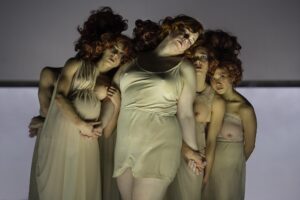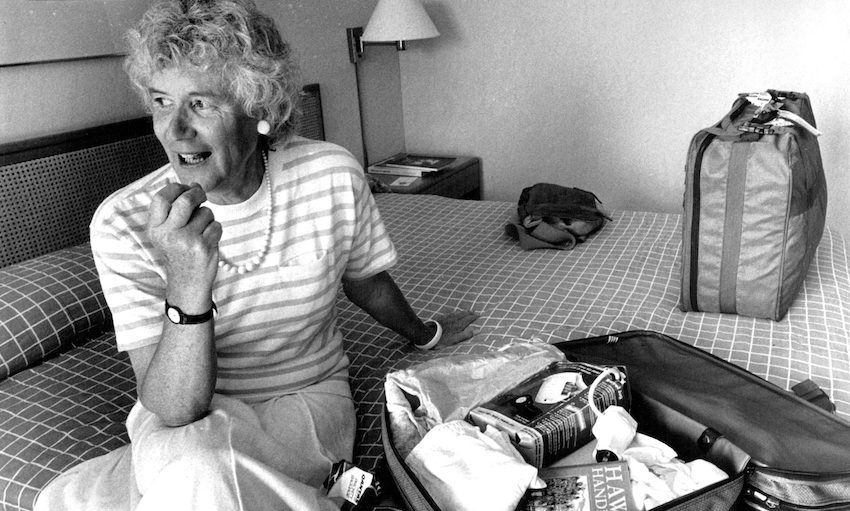
British Transgender Travel Writer Jan Morris Died Quietly In Her Beloved Wales
by Heather Cassell
It was a quiet end to an extraordinary life for award-winning celebrated travel writer, journalist, and historian Jan Morris.
Jan slipped into the other world for her next great journey in a Welsh hospital in Pwllheli near her home November 20. She was 94.
Her son, Twm Morys, announced her death in a statement to the media. He did not state the cause.
It was not the grand adventure she captured on the page in her countless articles and more than 40 books that documented cities, people, and history – including her own life in two memoirs.
Jan’s most famous memoir is her 1974 bestseller “Conundrum,” which documented her decade-long transformation from James Morris into Jan Morris at the age of 46.
In March, she published “Thinking Again: A Diary,” a collection of her diaries.
Her final book, “Allegorizings,” is set to be published in the United Kingdom and the United States now that she has passed. Jan joked with reporters from the New York Times to The Guardian for years that it would be published when she “kicked the bucket.”
Jan was “Perhaps the greatest travel writer of her time,” the Washington Post described.
A prolific and eloquent writer, Jan was known for her literary journalism style developing a “distinctive style of travel writing,” that engaged the sense through flowing prose, reported the Post.
Jan is often considered the founder of modern travel writing, but she never embraced the title.
“I have written many books about place, which are nothing to do with movement, but many more about people and about history,” with the exception of one book about a journey across the Oman desert, she told The Guardian in 2015.
Jan often published two or three books a year.
Getting the Story
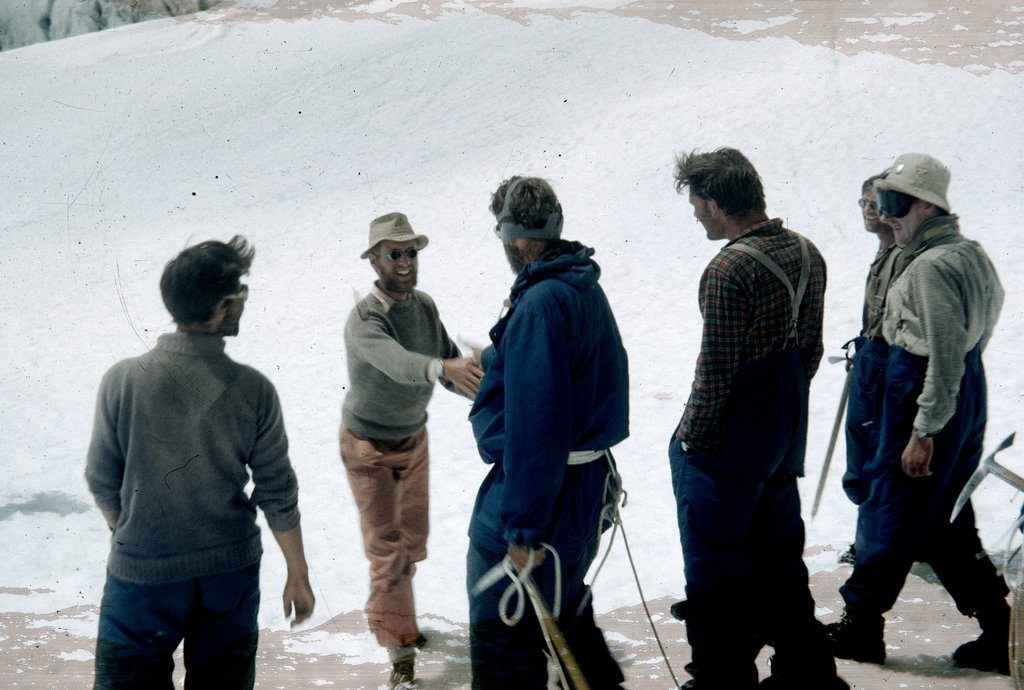
The travel writer burst onto the scene on the eve of Queen Elizabeth II’s coronation with news of one of the 20th century’s biggest adventures: Sir Edmund Hillary and Sherpa Tenzing Norgay’s summiting Mount Everest.
For the first time in known history the men conquered the world’s highest peak in 1953.
“I felt as though I had been crowned myself,” Jan wrote in “Conundrum.”
The last surviving member of Hillary’s team, Jan came herself within 7,000 feet of Everest’s summit before scrambling down the mountain to a basecamp where the Indian Army’s post keeping guard over Tibet’s border against China. The officers had a small radio unit that they allowed her to use to send a coded message: “Snow conditions bad stop advanced base abandoned yesterday stop awaiting improvement,” to break the news to her editors at the Times of London and the world that Everest had been conquered, she told The Guardian.
“I went up an unknown,” Jan told the New York Times in 1997, “and came down the most famous journalist in the world.”
The then-26-year-old reporter was already well into her early career as a roving corresponded covering Europe, the Middle East, and the United States for the Times of London when she was tapped by the newspaper’s editors to join Hillary’s Mount Everest expedition.
At the time, it was the sixth attempt by an explorer to reach the formidable mountain’s peak. All had failed before him.
Before Fame
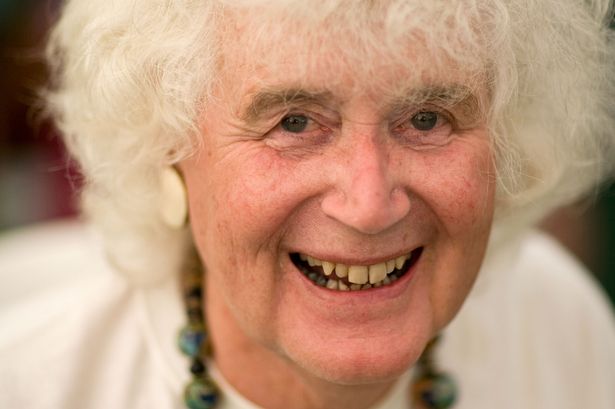
Jan was born to Enid Payne and Walter Morris in Clevedon, a town in Somerset, England, on October 2, 1926. Walter was gassed during World War I and died when Jan was 12-years old, reported the New York Times.
Her mother was a concert pianist.
Jan knew she was different around the age of three or four, she wrote in “Conundrum.”
“I realized that I had been born into the wrong body, and should really be a girl,” she wrote.
However, she followed the path of a well brought up English man.
Nearly a decade before Everest, Jan joined the 9th Queen’s Royal Lancers, the legendary British cavalry unit formed in 1715.
The cavalry was merged into the 9th/12th Royal Lancers in 1960, according to Britain’s the National Army Museum.
In 1944, at the age of 17, she enlisted in the British army and served as an intelligence officer with the cavalry in Italy and the Middle East during World War II.
When the war ended in 1945, she served in Palestine as a British protectorate for two more years. Jan was discharged as an army lieutenant.
Her experience in the Middle East landed her at a news agency in Cairo, Egypt’s capital city, and living on British Field Marshal Bernard Montgomery’s houseboat on the Nile for a while before returning to Britain.
Montgomery was one of World War II’s most decorated British soldiers, according to History.com.
In Britain, she attended the University of Oxford where she earned her bachelor’s degree in English literature in 1951.
That same year she joined The Times of London.
Jan remained at the Times of London covering international conflicts until one conflict, the Suez Crisis, cut her time short at the newspaper. She got into a dispute with her editors about Robert Anthony Eden’s position as Britain’s then-Foreign Secretary over the Second Arab-Israeli War that came to be also known as the Suez Crisis.
Jan left the Times of London for what was then Manchester Guardian. She was sent to Egypt when Israel launched its invasion, reported the Guardian. Embedded with the Israeli army she saw incinerated Egyptian lorries and tanks in the Sinai desert. Befriending some French fighter pilots based outside of Tel Aviv she discovered the first evidence of France supporting Israel with the Suez conflict and the use of napalm bombs in the war.
Her reporting on the Suez Crisis led to Eden resigning. Britain was humiliated, reported the Guardian.
Throughout her life, she was constantly traveling covering stories for British newspapers and magazines in Israel, Algeria, South Africa, and Japan.
She also began writing highly praised books.
Writing
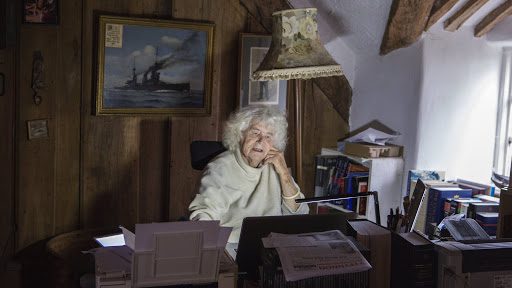
Jan’s first book, “Coast to Coast: A Journey Across 1950s America,” was published in 1956.
She followed it up with “Islam Inflamed: A Middle East Picture” a year later.
Reviewing the book for The Atlantic, Phoebe-Lou Adams wrote that Jan’s “descriptions of cities and countrysides are equally vivid” and her writing conveyed “the emotional tone of a place as sharply as its shape and color,” reported the New York Times.
Another New York Times critic Orville Prescott praised Jan’s writing calling her a “poet and a phrase-maker with a fine flair for the beauties of the English language,” reported the Post.
Reviews that surly pleased Jan. She told The Guardian that “bad reviews depressed her.” She had revenge fantasies against some of her early critics imagining “sending them a book they disliked, still in print 30 years later,” she said.
“Hell,” she wrote to The Guardian, “hath no harpy like a writer misreviewed.”
She was also fond of her fame. She took displeasure when people did not recognizer, she told The Guardian.
“Even at my level, success tarnishes,” she wrote to The Guardian. “I am shamefully disappointed if, having paid in a bookshop with a credit card, I find the assistant does not recognize my name.”
It was her bestselling, “Venice” (also known as, “The World of Venice,” in the U.S.), published in 1960 that really catapulted Jan into being the travel writer of her generation.
In 1961, she earned her master’s degree in English literature at her alma mater and became a freelance writer.
Jan’s favorite cities in the world, that she visited at least once a year, were Manhattan and Venice, reported the Post. But she also had an “abiding attachment” to Trieste, a port city in Northeastern Italy that she first visited in 1945. She returned to Trieste periodically throughout her life and finally wrote a book about it, “Trieste and the Meaning of Nowhere,” published in 2001.
She considered the book “perhaps her finest travel book,” reported the Post.
Life and Transitions
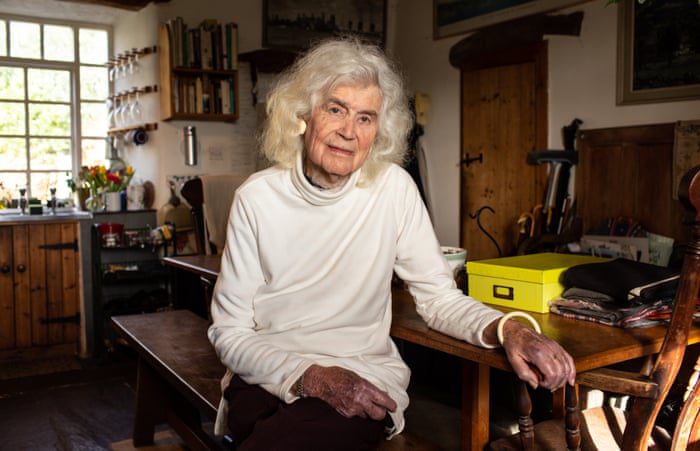
Jan met and married Elizabeth Tuckniss, the daughter of a tea planter, when she was 23-years old, in 1949.
Elizabeth knew about Jan’s internal turmoil from the beginning of their relationship.
In the early 1960s, Jan sought the help of prominent endocrinologist Dr. Harry Benjamin in New York. Harry was an early leading researcher of transgender people and the author of “The Transsexual Phenomenon” published in 1966.
“I was about to change my form and apparency — my status, too, perhaps my place among my peers, my attitudes no doubt, the reactions I would evoke, my reputation, my manner of life, my prospects, my emotions, possibly my abilities,” she wrote chronicling her experience in “Conundrum.”
Under his guidance, she began a slow transition process from James to Jan in 1964. In 1972, she decided to complete the process at a clinic experienced in the procedure in Casablanca, Morocco.
In the end, Jan told the New York Times in 2019, “I’ve never believed it to be quite as important as everyone made it out to be.
“I believe in the soul and the spirit more than the body.”
Jan and Elizabeth were together for 71 years up until Jan’s death last month.
Even when they were forced by law to divorce after Jan’s transition in 1974. Divorce and sterilization were legally common for transgender people who completed reassignment surgery across Europe and in the United Kingdom at the time. The couple remained committed to each other and had an open relationship. They renewed their vows in a civil union in 2008, before same-sex marriage became legal in England and Wales in 2014.
“We are back together again officially. After Jan had a sex change, we had to divorce,” Elizabeth told Britain’s Evening Standard at the time of their civil union. “So, there we were. It did not make any difference to me. We still had our family. We just carried on.”
The couple kept a gravestone in their home for when they both have passed that reads in English and Welsh, “Here are two friends, Jan and Elizabeth, at the end of one life.”
Jan loved Wales and was a dedicated Welsh nationalist.
The couple had five children together: three sons and two daughters.
One of the girls died as a baby.
Survivors
Jan is survived by her life partner Elizabeth, their sons, Twm, a Welsh poet and musician; Mark and Henry, and a daughter, Suki, and nine grandchildren.
Book your next Intrepid women-only vacation with Girls That Roam Travel. Contact Heather Cassell at Girls That Roam Travel at 415-517-7239 or at . To contract an original article, purchase reprints or become a media partner, contact .





